Multi-disciplinary artist Trevor ‘Trouble’ Andrew, also known as Gucci Ghost, is chatting to i-D on FaceTime, resplendent in a red Chanel sweater. We point out that he’s not quite on brand, and he laughs, “Oh shit, I didn’t even think!” He swivels his laptop cam around the studio to reveal the energetic chaos surrounding him; it’s a mountain of canvases, clothing, and ephemera. Everything you’d expect from an artist who seems to be perpetually embedded in a purple patch of creativity. Joking about the artwork encroaching around him, Trevor explains, “A lot of stuff has piled up because I’m a hoarder, there are televisions and records and artwork. My wife came over this week with our three-year-old son, and they hadn’t been here for a while, and it was a sensory overload for him. He was like ‘woah!'”
p.p1 {margin: 0.0px 0.0px 0.0px 0.0px; text-align: justify; font: 8.5px Helvetica} span.s1 {font-kerning: none}
Trevor’s world is a sensory overload whatever your age. From his background in action sports and his international success as a snowboarder, he’s carved out a career that has kept him moving and hustling with his instinctive talent. Growing up in a small town in Nova Scotia, Canada, Trevor is one of life’s intuitive explorers; falling into skateboarding at an early age, he became obsessed with the world it opened up to him. “Growing up all I ever did was draw and go skateboarding,” he recalls. “My brother skateboarded for a little bit and there was this other dude who lived down the street who schooled me. He brought me Black Flag tapes and skate videos that gave me a look into a whole other world.”
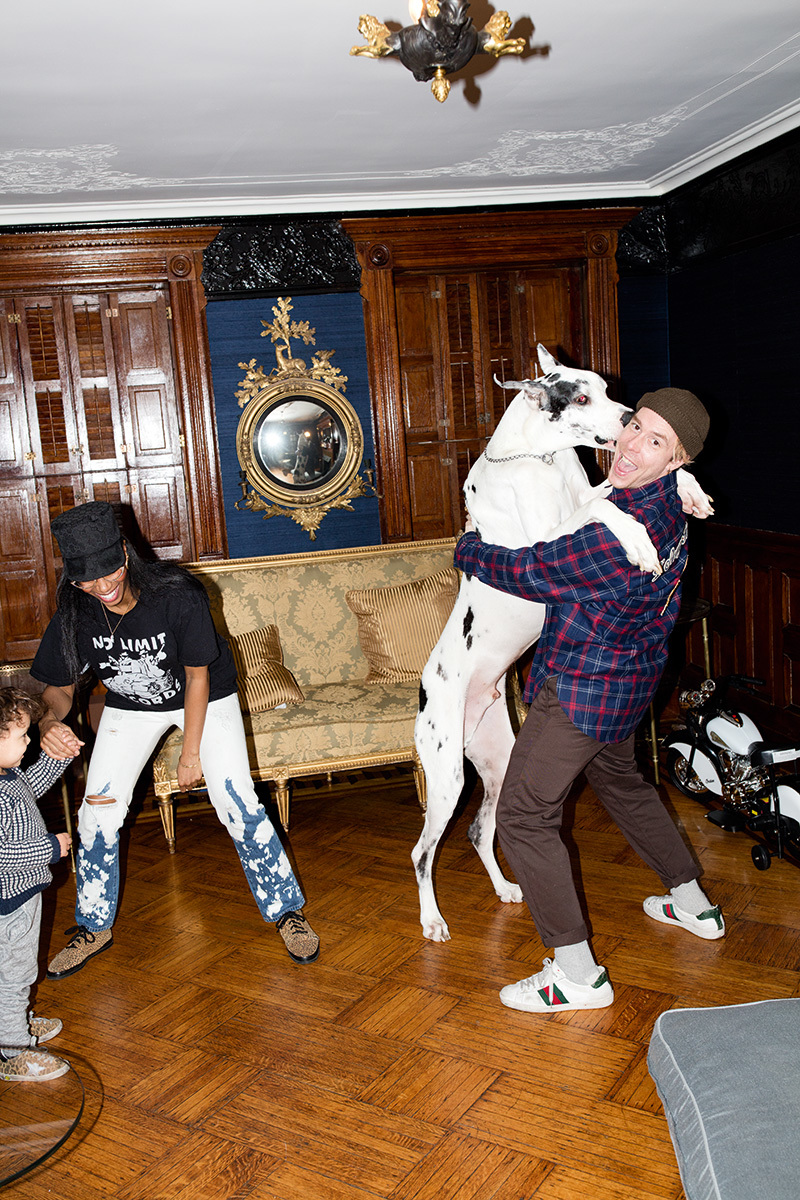
It was Trevor’s mom, however, who jumpstarted his Olympic snowboarding career. “My mom worked at the ski hill just down the street and one day she brought home a Burton catalog,” he says. “So that winter I learned how to snowboard. I’d skied a little bit and it just made sense. I was attracted to it because there were no rules.” Trevor left home at 14 and turned pro when he was 16; competing as part of the national Canadian team in the 1998 Winter Olympics in Nagano, Japan, and the 2002 Winter Olympics in Salt Lake City. During this time, he was integral in pushing snowboarding style away from Alpine ski gear into a look that was equally at home on the streets. “There was nothing available at the time that felt very street,” he explains, “so I used to cut up jeans and wear them over snowpants. Once I got into being a pro snowboarder I developed my own snowboarding clothes, goggles, boards, and graphics. I was always keeping scrapbooks, taking photos, and writing a journal.” Working with brands including Oakley and Burton, Trevor reveals how he “always had ideas for how [his] ads would be laid out. I was always involved in the whole thing.”
After a knee injury put him out of snowboarding in 2005 at the height of his career, Trevor moved to Philadelphia to rehabilitate and be with his girlfriend, singer and producer Santigold, where he edged ever further towards his art. “I’m always transferring my energy into different mediums,” he explains, going on to release two “crunk rock” albums under the moniker Trouble Andrew. “Always making shit and surviving. It’s something I love to do, working the regular situation, working off something I truly love.” The hustle later shifted to New York, where he and Santi settled in Bed-Stuy, Brooklyn, with their Great Dane Bo and, as of 2014, their son Radek.
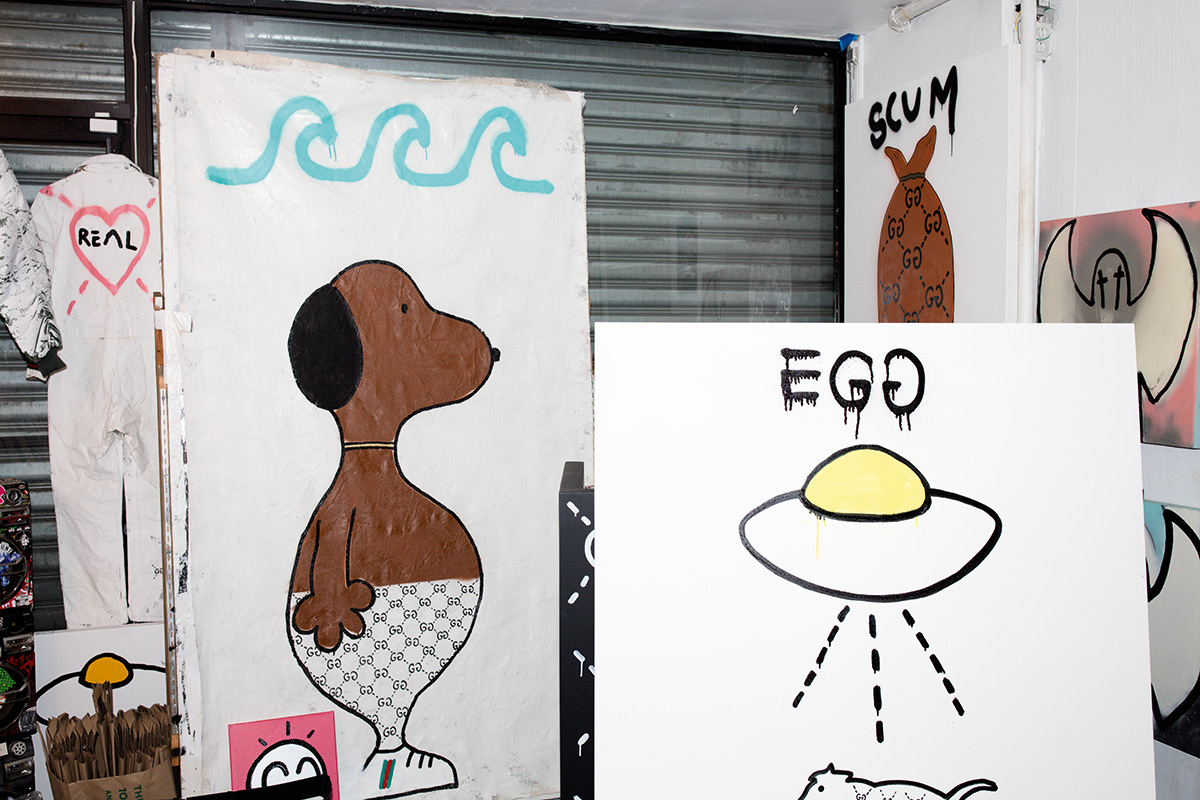
Here, Trevor’s multimedia approach began to develop further and after needing a last-minute costume for Halloween in 2013, he cut two eye holes out of his Gucci bed sheet and dressed up as a ghost. Tweeting a picture of himself skating round New York City birthed the art project he would become most recently famous for — Gucci Ghost. That night, he bumped into the celebrated photographer Ari Marcopoulos. Ari had previously documented Trevor’s snowboarding career while on tour with him in the 90s, and a young Trevor features heavily in Ari’s Transitions and Exits book, even appearing on the book’s cover receiving a check for his first snowboarding winnings. With those winnings a 17-year-old Trevor went to the mall and purchased his first luxury item, a Gucci “G” watch, which he had lusted after since spotting Inspectah Deck wearing it on a Wu Tang album cover. From here his obsession with everything Gucci snowballed into Gucci Ghost, the mixed media art project featuring naive illustrations of a ghost emblem entwined with linked G’s and Gucci monograms which found their way onto New York walls, canvases, and clothing. Incorporating slogans such as ‘Real’ and ‘Life is Gucci,’ it’s equally Warhol, Basquiat, and Mark Gonzales and quickly built a cult following.
“Painting the Gucci Ghost is a reaction to my experience in that mall thinking, ‘damn, I can buy a Gucci watch for the first time!'” Trevor says. “At the time, it was about transforming things that I found and making them Gucci. But then I started going deeper and deeper and becoming more obsessed with catching Gucci’s attention regardless of whether it was positive or negative. My mantra was, ‘I’m gonna do this until Gucci either sues me or hire me!’ I was making all these clothes and jackets and there were a lot of people saying ‘Gucci will never hire you, they don’t even light their own cigarettes!’ But there was a certain point when I was in so deep that I knew it would work. It would just take the right person to make it happen, and then Alessandro Michele got his gig and he was the right person. He got it.”
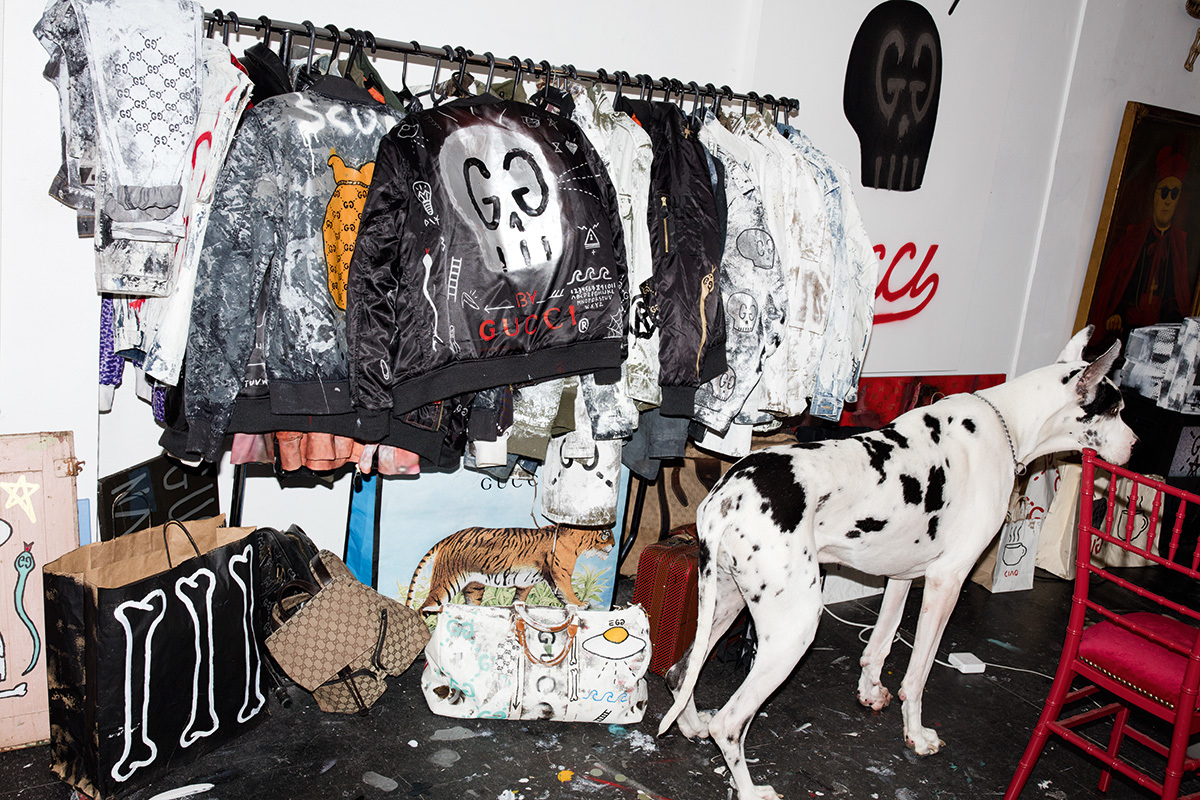
Over the years, street culture has periodically name-checked Gucci as an aspirational trophy brand, from Gucci Mane to Schoolly D and his hit track “Gucci Time,” to Harlem tailor Dapper Dan and the fake Gucci and LV tracksuits he designed for New York rappers including Eric B & Rakim, LL Cool J, and Ultramagnetic MCs. “There’s definitely always been a connection,” Trevor agrees. “I mean Dapper Dan was always on some really visionary shit. My stuff before it happens, it’s like what’s real? That’s the dopest shit, it’s one-of-one. I think it’s really interesting that brands will embrace that shit, but for me Gucci Ghost was just an art project that I wanted to convince people was real, and suddenly it was.”
In 2016, Ari was commissioned to shoot Gucci’s pre-fall lookbook, so introduced Trevor to Gucci’s Creative Director, Alessandro Michele. Alessandro couldn’t wait to meet the snowboarder turned artist, and Gucci Ghost quickly became very real. “I showed up to meet Alessandro not really knowing what to expect,” Trevor recalls. “I thought we’d just do a T-shirt print or something. I had no idea how much he knew about what I’d been doing. So I turned up with this suitcase full of homemade pieces, canvases and paper bags I’d painted. It was such a welcoming feeling to see how excited he was.” Some of the pieces Trevor brought in, Alessandro built upon and elevated, other pieces they created together from scratch. “We were just jamming!” Trevor says. “I would paint and Alessandro would add to it. He never told me what to do. He would just bring in clothes for me to paint. He brought it to life. It was fast!” It is testament to the 96-year-old Italian luxury brand that they understood the value of street culture; high and low; championing a tribute brand which previously might have been shutdown with a cease and desist. The collaboration has helped fuel Gucci’s stratospheric rise into one of fashion week hottest tickets, with Trevor’s artwork adorned across the women’s collection, cruise and menswear.
Laughing about what to expect from the future, Trevor elaborates, “The only thing I fear in life is a regular working situation. I’ve never had to do it. But I’ve always committed so hard that I’ve found the luck to make it happen. I love to paint and it’s just another way to release my anxiety. I don’t really know what I’m doing; I’m just doing it. Running from that 9-to-5!”

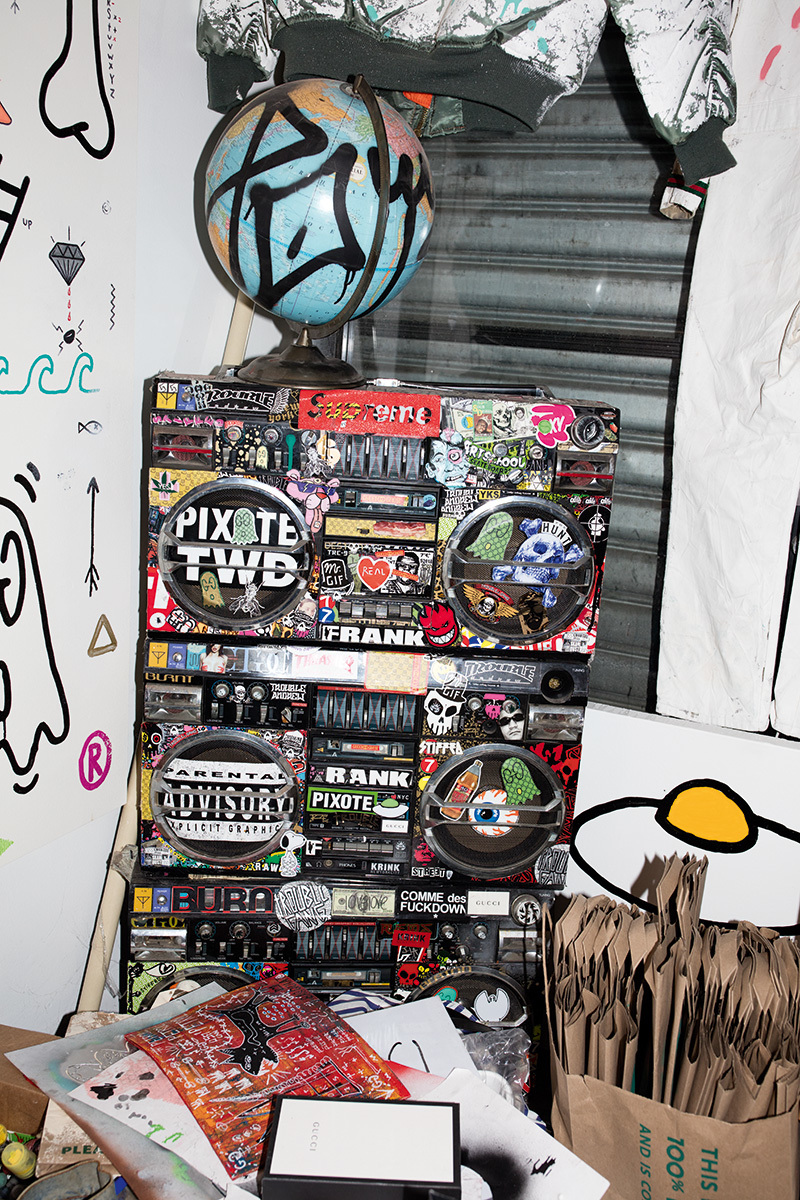
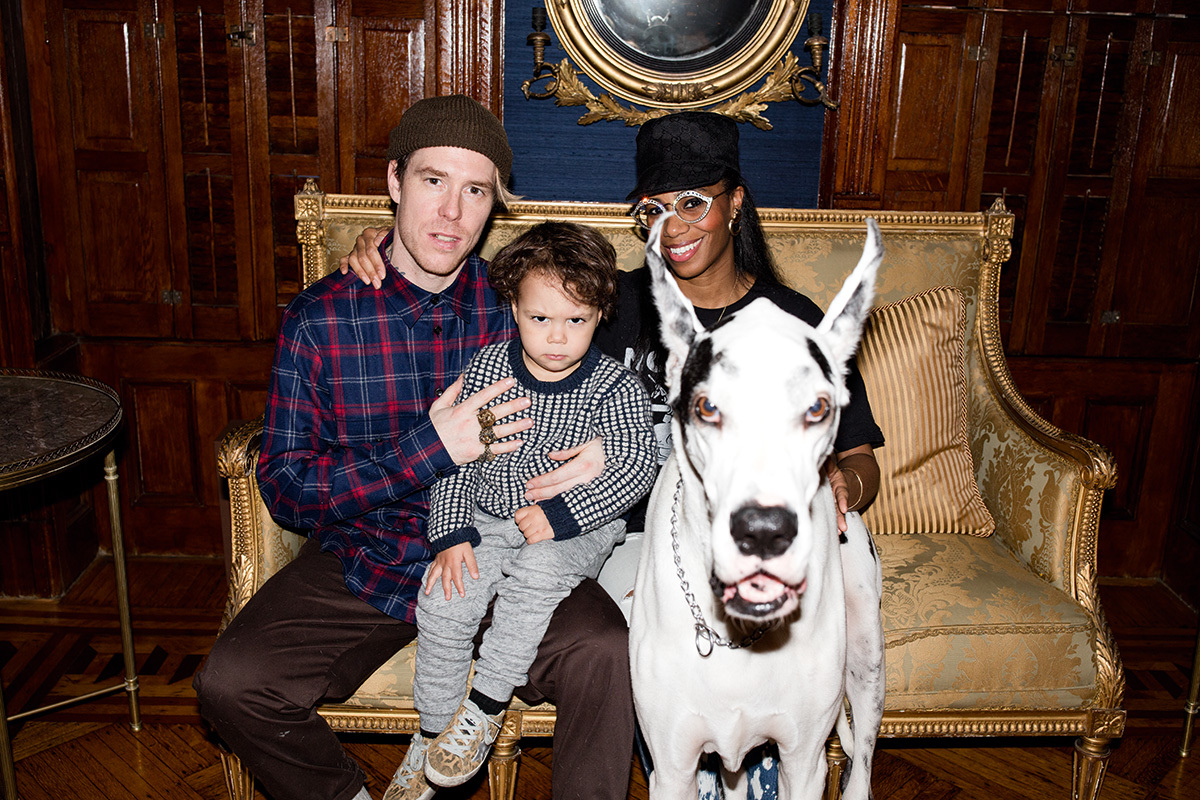

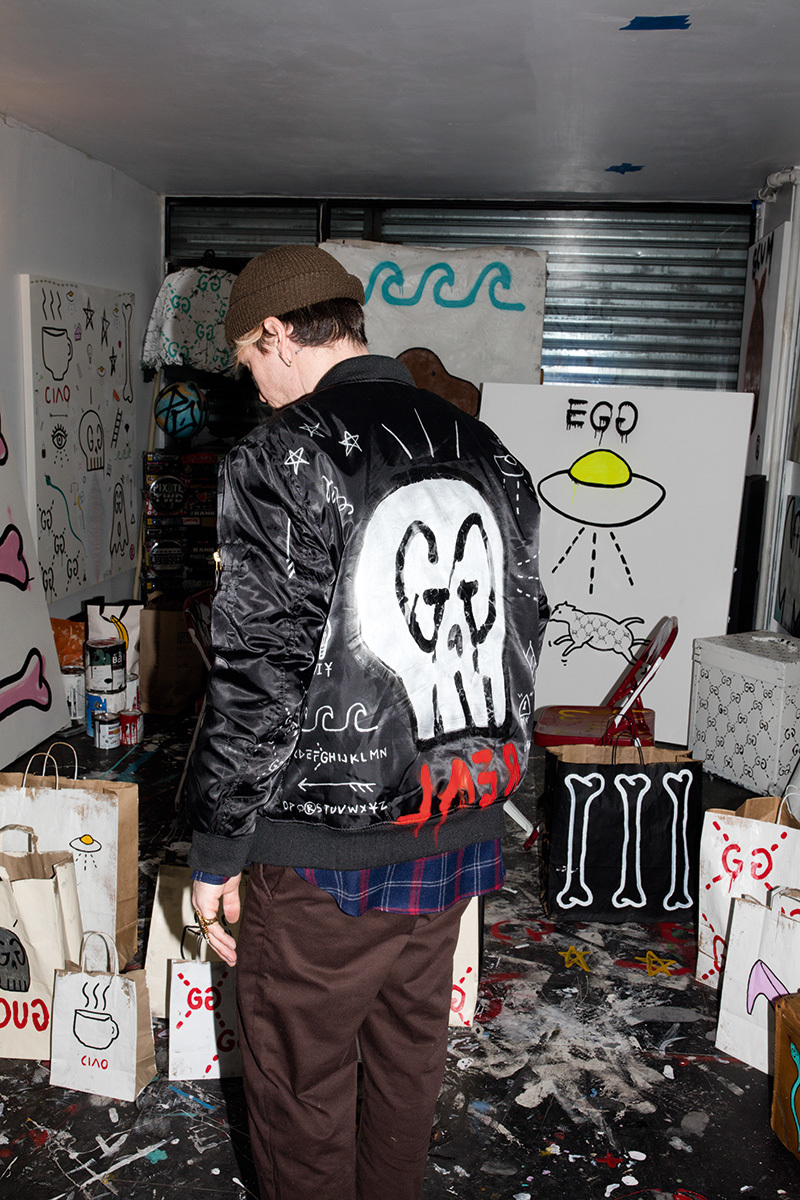
Credits
Text Jeremy Abbot
